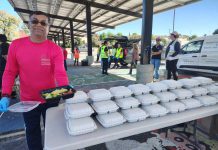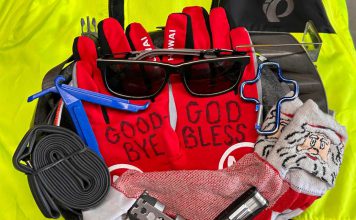Gone are the primitive days of floppy disks and chalkboards. On
Friday, students in the third, fourth and fifth grades at Rucker
Elementary School built their own robots
– and made it look like a piece of cake. Full article
Today’s breaking news:
Police arrest man wanted for stabbing, robbery
Four suspects at large following stabbing
Plaques to honor Gilroy’s historic homes
Hunt in full swing for three new GUSD principals
Gone are the primitive days of floppy disks and chalkboards.
On Friday, students in the third, fourth and fifth grades at Rucker Elementary School built their own robots – and made it look like a piece of cake.
“You put it there, the ABC thing, it’s to this, then you touch this for speed duration, how much it turns, back and forth and stuff. Think you can fit a couple of movements, get something in place sideways …” muttered Cyrus Smith as he dragged an arrow over a box on a laptop with options reading “sensor, time, count.”
The 11-year-old fifth grader and his partner Jeffrey Hale, 10, were explaining how to program their mechanized device with what appeared to be subconscious ease.
The two were participating in Lego Robotics Day at Rucker, an activity scheduled in conjunction with National Engineers Week. It was spearheaded by Gilroy resident John Day, a program manager for the IBM Almaden Research Center in San Jose, who was joined by five other engineer volunteers from IBM.
“It’s just outreach to encourage kids to learn about engineering,” said Day, who has four children spread between Gilroy schools Rucker, Ascension Solorsano Middle School and Christopher High School.
He grinned on as students enthusiastically interacted with their gadgety creations.
“If you make programming fun, it’s not a chore.”
He said the activity gives youth early, hands-on exposure to computer work and trouble shooting, a valuable attribute that continues to skyrocket in desirability. During the exercise he explained students customize a program on laptops brought in by IBM volunteers, download that program into their robot and subsequently figure out how to troubleshoot “inevitable glitches” when technical malfunctions arise. The actual robot bodies, which the students build, are made by Lego Mindstorms Education.
“This is a funny robot,” mused Alexia Alvarez, 10.
Alvarez and her partner, Rachael Gallagher, 10, were attempting to get their robot to make an unaided 360-degree turn around a cardboard box. The two watched as it inched to halt, then made a turn in the wrong direction before crashing into the box head-on.
“Let’s just say it made it around the box,” giggled Gallagher.
Toward the end of class, the multipurpose floor was a sea of students and miniature mechanized devices – some turning continuous circles, some crashing into walls, some zooming through legs, some going head-to-head in mortal robot combat and some carrying stuffed animal passengers.
A few were even talking, as students could record and upload personalized sayings.
“It’s supposed to say, ‘I love cheeseburgers,’ ” observed Julia Martinez, 10, getting down on her knees and cocking an ear toward her robot’s speakers.
By now Smith and Hale were jumping, skipping and break dancing on the floor, creating human barricades for their robot to zigzag around and collide into.
Alvarez and Gallagher had finally targeted their robot’s bugs and were congratulating each other.
“We did it!” said Alvarez. “High five.”
Day said the exercise is an engaging gateway for students to learn the importance of math, science and computers.
“It’s a lot of fun,” mused IBM volunteer Alex Reyes. “These kids are inspiring.”















